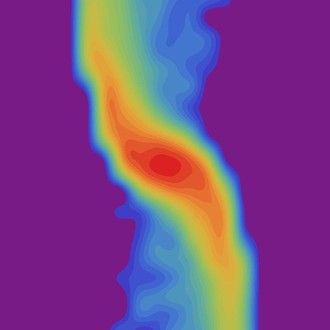
The evolution of dwarf galaxies in the tidal field of the Milky Way is one of the most promising mechanisms for the transformation of disky dwarfs into dwarf spheroidal galaxies, a class of objects most abundant in the Local Group. Using N-body simulations Ewa Łokas and collaborators from Copernicus Center in Warsaw and University of Wisconsin-Madison studied this evolution and its dependence on the relative orientation of the dwarf galaxy’s disk with respect to the orbit. It turns out that the evolution is strongest in the prograde case, i.e. when the disk’s angular momentum is aligned with the orbital one. This points to the resonant nature of the interaction: the effect is particularly strong when the intrinsic angular velocities of stars in the dwarf coincide with the orbital velocity. Due to a large orbit eccentricity in the simulations this happens only near pericenters: the dwarf is then most strongly affected by tidal forces. The stars in the outer regions are stripped forming extended tidal tails and the main body of the dwarf is transformed from a disk into a bar. The findings from the simulations agree very well with semi-analytic predictions. The results were obtained as part of the project “Dynamics and morphology of interacting galaxies” funded by the National Science Centre within the Maestro program. The article The resonant nature of tidal stirring of disky dwarf galaxies orbiting the Milky Way, describing these findings has just been submitted for publication in the Astrophysical Journal.
The figure shows the stellar component of the simulated dwarf galaxy at the first pericenter passage in the prograde case when the tidal effects are particularly strong. (Copyright Ewa L. Łokas)






